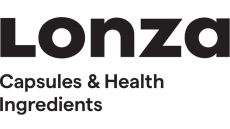Maccine opens non-human primate MRI centre
Addition of NHP magnetic resonance imaging (MRI) is part of wider efforts by Maccine to perform preclinical research that more accurately predicts efficacy in Phase II. Producing more relevant data helps make better decisions about which molecules to advance, saving time and money.
Installation of a Siemens 3T TIM Trio instrument at the NHP MRI centre is part of the translational research strategy. The Siemens 3T TIM Trio is widely used in clinical research and secondary care, helping to make information gained in preclinical applicable to later phases.
Mark Wong, associate director of business development at Maccine, told Outsourcing-Pharma the Singapore-based preclinical contract research organisation (CRO) is trying to occupy the translational niche. In doing so Maccine aims to help clients reduce Phase II and III failures.
Implementation of this translational strategy has seen Maccine adopt cross-species biomarkers; naturalistic disease phenotypes, such as diabetic or aged monkeys; and clinical technology platforms, such as MRI, CT (computed tomography) and PET (positron emission tomography).
The new MRI centre will primarily be used for neuroscience discovery. Using the equipment in longitudinal studies Maccine can monitor a treatment’s ability to reverse an induced disease state, such as schizophrenia. The equipment can also be used to measure fat content.
Macaque colony
The imaging team will also benefit from a functional MRI cynomolgus macaque colony formed by Maccine. Formation of the colony occurred after a major pharma expressed an interest in investigating the effect of a treatment on a conscious, unsedated animal, said Wong.
Adding this capability puts Maccine at the forefront of preclinical imaging of large mammals. Leading academic establishments have imaged conscious unsedated animals but Wong believes it is a first in the contract research sector.
Toxicological imaging
Imaging is emerging as a possible technique to improve toxicology and safety testing. Wong said performing longitudinal imaging studies on individuals has the potential to reduce animal use and advance a sector that seen relatively little technological development.
Physiological parameters used in imaging to quantify drug efficacy can also be applied to toxicology. This has the potential to support earlier and more informed decisions about whether to advance a candidate into clinical trials.
Interest in using imaging in toxicology has been driven by the US Food and Drug Administration (FDA) Critical Path Initiative (CPI) and desire to reduce Phase II and III attrition. CPI is an FDA project to advance the development, evaluation and production of medical products.














